COVID-19
Bombshell long-term study of Pfizer, Moderna COVID shots shows ‘self-assembling nanostructures’

From LifeSiteNews
Researchers have observed with a microscope the self-assembly of nanostructures in the mRNA COVID shots, as well as toxic effects on blood cells from all of the COVID shots, and potential detox mechanisms.
Researchers in Korea have observed what appear to be “self-assembling,” “synthetic” nanostructures such as spirals and tubes that form within the contents of the COVID Pfizer and Moderna mRNA shots over the course of months.
Dr. Young Mi Lee and Dr. Daniel Broudy, co-authors of the recently published study of these “artificial constructions,” suggested that their main findings were the direct observation of both “self-assembling entities… of many different shapes,” and of “cellular toxicity” triggered by the COVID shots, “especially” on blood and sperm cells.
In a Korean laboratory, using flu vaccine and normal saline as controls, the researchers incubated Pfizer and Moderna COVID injectables in various fluids, including distilled water, saline, blood plasma, and semen. AstraZeneca and Novavax COVID vaccines were also studied, but they did not develop the “self-assembled” structures seen in the Pfizer and Moderna mRNA shots.
While no floating particles were observed in the saline control, and only a few floating particles were observed in the flu, Novavax, and AstraZeneca vaccines, “many” entities were seen in “all residual and new” Pfizer injectables. About 30% of these reportedly had a “worm-like shape,” and these combined with “rods, discs, and crystal-like mixtures.” When incubated at body temperature for up to two days, these entities developed into other shapes, including “spheres” and “elongated tube-like objects.”

Each of the Moderna shot contents, by contrast, had “a greater number of particles” and “more artificial moving structures,” including coils and beaded chains.

Over the course of a few weeks, “2 dimensional rectangular shaped structures” appeared at the bottom of the dish in which the COVID Pfizer and Moderna shots were incubated, from which three-dimensional structures seemed to emerge, and then were “dislodged” from the bottom of the dish and rose into the upper fluid layer.
“Amazing self-assembling structures of great diversity became visible by about the fifth week of incubation. They consisted ultimately of ribbons, coils and filament-like structures,” Lee and Broudy wrote.
The “peak” stage of self-assembly of these structures appeared to be around two to six months of incubation, according to the researchers, after which they progressively “disintegrat(ed)” and then “finally disappeared, except for a remnant trace.”
These remarkable nanostructures, which were studied under a microscope at up to 400x magnification for over a year, have not been precisely identified but resemble objects within the COVID shots found by other doctors.
For example, in 2022, Australian Dr. David Nixon found “self-assembling” angular structures within the COVID shots, as well as “wires” with frayed edges, around which apparent “chips” often appeared. He observed similar “wires” in the blood of the vaccinated, and interestingly, one of these “frayed wires,” around which blood cells clumped, resembles the shape of what Lee and Broudy described as a “tripod-like, striated filament” found in the Pfizer shot incubated in normal saline.


Lee and Broudy speculated that the filament structures they observed could be linked to the white clots being found by embalmers in the bodies of the vaccinated, noting, “In analysis of blood clots from vaccinated persons, a few filament-like structures were found attached to brownish homogeneous cloudy white clots extracted from the middle layer of whole blood sediment.”
Remarkably, Dr. Carrie Madej also found in 2021 what she described as “self-assembling” and “synthetic”-looking objects in different COVID injections, including “fibers,” some of which “had a little cube structure on them,” and the emergence of brilliant colors in the Moderna jab after a couple of hours.
Interestingly, while the COVID shot manufacturers have not publicly discussed the presence of self-assembling technology in the mRNA shots, “Self-assembled mRNA vaccines” have been discussed in studies published in 2021, which note that self-assembled structures can be used to deliver COVID proteins, and that protein nanoparticles themselves can be self-assembled. A study was also published last year to the science journal Nature discussing the potential that “immunogenic self-assembling” COVID spike nanoparticles have as a “genetic vaccine candidate against SARS-CoV-2.
According to Lee and Broudy, the “various kinds of transparent ribbons, films, coils, and spirals” that appeared in the Pfizer shot when incubated in distilled water “were very similar in structure to the micro- and magnetic- nanorobots already presented in numerous scholarly papers.”
Toxic effects on blood
In addition to showing the self-assembly of what appear to be synthetic nanoparticles, Lee and Broudy’s experiments have demonstrated the effect the COVID shots have on blood: Each injectable showed “toxic effects on blood cells,” with Novavax showing particularly rapid cytotoxicity. The researchers found that each shot had a distinct effect on blood cells, with Pfizer triggering “cellular collapse of white blood cells and damaged platelets”; Moderna triggering rouleaux (stacking) of red blood cells; Novavax causing the disintegration of the nucleus of white blood cells and some rouleaux of red blood cells, and AstraZeneca triggering “prominent rouleaux.”
The researchers noted that white blood cell damage can be related to immune suppression, fatigue can be linked to Rouleaux blood formation, and blood clot formations can be related to platelet damage. Their findings are especially significant considering that all of these symptoms have been frequently reported after COVID injections.

For example, a study published earlier this year shows that the COVID shots pose a risk of blood clots to the brain that is 200 times greater than that posed by other vaccines over the past three decades. In addition, increasing evidence is emerging linking the COVID shots to a spike in cancer rates, with studies and doctors finding that the jabs cause immunosuppression. Long-term fatigue is also a commonly reported symptom of the shots. One German doctor, Jörg-Heiner Möller, has described a “PostVac” syndrome he says 120 of his patients have suffered after their COVID shots, which often involves a “severe fatigue syndrome.”
EMFs
Another remarkable observation by Lee and Broudy was that of the effect of electromagnetic frequencies (EMFs) on the self-assembly of the COVID shot contents. For example, when the Moderna vial contents were placed on a cell phone in 5G streaming mode over a wireless recharger, “the floating materials abruptly became larger and more numerous with sharper and more rectangular edges.”
According to the researchers, Pfizer’s shot did not demonstrate an immediate effect under the same conditions, but a “delayed effect” of proliferating “filaments” after a month of exposure.
By contrast, while Moderna’s shot showed “no noticeable effects” after exposure to an external hard drive, which emits magnetic fields, the Pfizer shot showed “modest” degradation of its contents. The researchers concluded, “it could be postulated that some kind of electric current can stimulate the nanostructure’s activity, while some conditioned magnetic current can hamper their activity.”
It is noteworthy that Lee and Broudy are not the first to observe that EMFs have an impact on the contents of the COVID shots. Dr. David Nixon found that the formation of “crystalline structures” in the Pfizer COVID shots appeared to depend on their exposure to electromagnetic frequencies. When he put the slide of Pfizer shot fluid “inside a faraday bag” blocking EMFs he said came from his wireless router, he only saw black, round “dots” form within its contents, as opposed to the boxy shapes with sharp right angles that otherwise formed.


In addition, Ecuador-based electrical engineer Matt Taylor has observed striking effects of EMFs on the self-assembly of unidentified objects within the COVID shots. He testified in 2022 that when he put a drop of the COVID jab on a microscope slide and placed that slide on an internet router, he observed the self-assembly of what he believes “look like integrated circuits.”
According to Taylor, when he turned the router off, the objects “immediately” began to break apart. He repeated the experiment three times and “begg[ed]” people to reproduce his investigation to see if his findings can be replicated. In fact, Nixon had indicated that Taylor had inspired his own test with the faraday bag.
“If someone can repeat this, the implications are so incredibly wonderful. We can start to explain clots, we can start to explain detox processes,” said Taylor.
Detox
While EMF-triggered self-assembly of “vaccine” nanomaterials suggests one potential “detox” avenue, Lee and Broudy found what seem to be other ways the mRNA shots’ synthetic-looking contents can be disintegrated, if not excreted from the body.
Lee and Broudy wrote that in the “later stage” following injection, at least three weeks afterward, “colloidal gold or silver (3-5 nm in diameter and 10-20 ppm) has been observed to attach to, disrupt, actively degrade, and ultimately dissolve various nanostructures.” They added that ongoing experiments are examining the longer-term results of such protocols, and postulated that gold or silver could help in the recovery of damaged organs and normal blood flow.
The researchers also speculated that “routine exposure to heat saunas” may cause the shots’ nanomaterials to “dislodge from tissues and escape through sweat gland pores.” Reduction or even elimination of the use of personal electronics was also recommended, although Lee and Broudy did not mention the potential helpful effects of wearing EMF shielding devices after vaccination.
They concluded by calling for a worldwide moratorium on the COVID shots: “until the components can be verified and their long-term effects understood, a necessity flouted by calls for Emergency Use Authorization, an immediate global ban is needed.”
COVID-19
Top COVID doctor given one of Canada’s highest honors
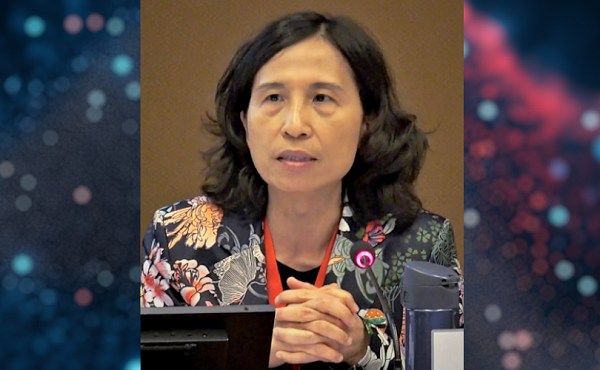
From LifeSiteNews
Dr. Theresa Tam received the Order of Canada for her controversial COVID-19 response as the nation’s chief public health officer.
Canada’s former top medical advisor, known for her promotion of masking and COVID vaccines, has received one of Canada’s highest honors.
On June 30, Governor General Mary Simon awarded Dr. Theresa Tam, Canada’s former Chief Public Health Officer (CPHO), the Order of Canada award for her work implementing dangerous COVID regulations, including masking and experimental COVID shots.
“For decades, Theresa Tam has striven to advance global and national public health as a pediatric infectious disease specialist and public servant,” the press release read.
“Her tenure as Canada’s chief public health officer has been characterized by her commitment to health equity and highlighted by her leadership role in the country’s response to the COVID-19 pandemic,” it continued.
The award, given to Canadians who have made extraordinary contributions to the nation, is Canada’s second-highest civilian honor.
Tam’s reception of the award comes just weeks after she stepped down as CPHO, ending her eight-year tenure in the position.
In the early months of 2020, Tam became well-known by Canadians for leading the country’s response to the COVID “pandemic” and pushing arbitrary and dangerous regulations.
Initially, Tam assured Canadians that masking was unnecessary, ineffective, and could even pose health threats.
However, shortly after, Tam changed her policy, telling Canadians that they should even wear masks during sex, a practice which has not been proven to be effective in preventing the spread of COVID and can cause myriad health issues.
Additionally, Tam promoted experimental COVID vaccines for Canadians as young as six months old despite having no long-term studies on its effects and an extensive amount of research proving the dangers of the experimental COVID mRNA jabs that include heart damage and blood clots.
In 2022, after thousands of Canadians reported adverse effects from the vaccine, Tam announced that the federal government was reviewing all federal COVID vaccine mandates, claiming that Canada’s Public Health Agency has never outright endorsed mandatory vaccination.
Tam’s remarks come after more than 1,000 federal workers have been suspended without pay because they chose not to get the COVID jabs or disclose whether they had them per the Privacy Act.
The Order of Canada was also awarded to British Columbia Provincial Health Officer Bonnie Henry, who is known not only for her heavy-handed COVID response, but also for promoting drug use throughout the province.
In 2023, hundreds of British Columbia health care workers sued Henry for ongoing COVID shot mandates preventing them from working. Under Henry, vaccine passports were implemented which required residents to show digital proof of vaccination to enter gyms, restaurants, and other “non-essential” facilities.
Henry also pushed the experimental and dangerous vaccine on children as young as five, despite that fact that clinical trials would not be completed for another two years.
Additionally, in 2024, Henry recommended that British Columbia expand its “safe supply” program to legalize fentanyl and heroin, despite evidence that the program is not working and has worsened the provinces drug crises.
COVID-19
New Peer-Reviewed Study Affirms COVID Vaccines Reduce Fertility
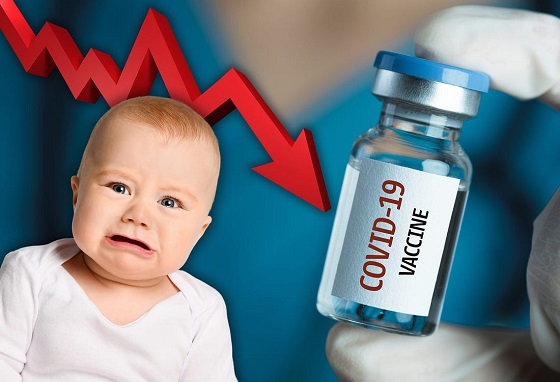
Here’s what the numbers reveal, and what it could mean for humanity
What was once dismissed as a “conspiracy theory” now has hard data behind it.
A new peer-reviewed study out of the Czech Republic has uncovered a disturbing trend: in 2022, women vaccinated against COVID-19 had 33% FEWER successful conceptions per 1,000 women compared to those who were unvaccinated.
A “successful conception” means a pregnancy that led to a live birth nine months later.
The study wasn’t small. It analyzed data from 1.3 million women aged 18 to 39.
Here’s what the numbers reveal, and what it could mean for humanity.
First, let’s talk about the study.
It was published by Manniche and colleagues in the International Journal of Risk & Safety in Medicine, a legitimate, peer-reviewed journal respected for its focus on patient safety and pharmacovigilance.
The study was conducted from January 2021 to December 2023 and examined 1.3 million women aged 18–39. By the end of 2021, approximately 70% of them had received at least one COVID-19 vaccination, with 96% of the vaccinated cohort having received either the Pfizer or Moderna vaccine.
By 2022, a stark difference was clear.
The vaccinated cohort averaged around 4 successful conceptions per 1,000 women per month.
That’s a staggering 33% LESS than the 6 per 1,000 seen in the unvaccinated group.
This means that for every 2 vaccinated women who successfully conceived and delivered a baby, 3 unvaccinated women did the same.
In 2022, unvaccinated women were 1.5 times MORE likely to have a successful conception.
Again, that’s a conception that led to a live birth nine months later.
The authors did not jump to the conclusion that their study proved causation. They cited that other factors may have played a role, such as self-selection bias
However, the researchers noted that self-selection bias does not explain the timing and scale of the observed drop in fertility.
Moreover, birth rates in the Czech Republic dropped from 1.83 per 1,000 women in 2021 to 1.37 in 2024, adding further evidence that the COVID-19 vaccines may be contributing to the decline in fertility.
That downward trend, the researchers argue, supports the hypothesis that something beyond individual decision-making may be affecting conception rates.
As such, they argue that the study’s results warrant a closer and more thorough examination of the impact of mass vaccination.
If this study holds true, and vaccinated women are really much less likely to have successful conceptions, the implications for humanity are massive.
Millions of babies could be missing each year as a result of COVID vaccination, and recent data from Europe and beyond already point to a deeply disturbing trend.
NOTE: Europe experienced a sharper decline in births than usual from 2021 to 2023.
Live births fell from 4.09 million in 2021 to 3.67 million in 2023, marking a 10.3% decline in just two years.
The new Czech study adds to growing evidence that COVID vaccines may be contributing to a dramatic decline in fertility, just as many feared all along.
As Elon Musk warns, “If there are no humans, there’s no humanity.”
Whether the shots are the cause or not, the trend is real—and it’s accelerating.
It’s time to stop dismissing the signals and start investigating the cause.
Thanks for reading. I hope this report gave you real value. This is a critically important topic that deserves attention.
If you appreciate my work and want to help keep it going, consider becoming a paid subscriber.
99% of readers get this content for free. But just $5/month from the 1% keeps it flowing for everyone else.
If this work matters to you, this is the best way to support it.
Be the 1% who makes it possible.
Catch the rest of today’s biggest headlines at VigilantFox.com.
-
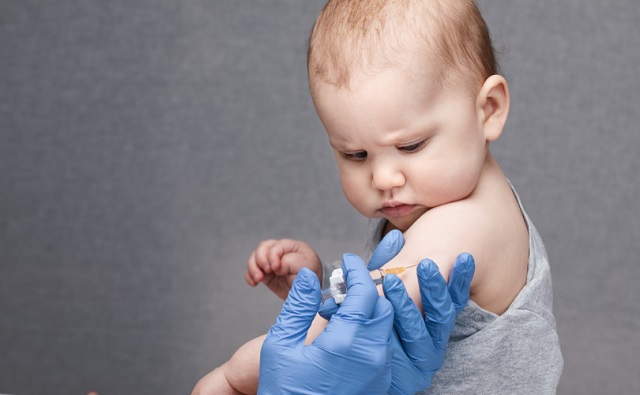
 Business1 day ago
Business1 day agoRFK Jr. says Hep B vaccine is linked to 1,135% higher autism rate
-

 Crime2 days ago
Crime2 days agoNational Health Care Fraud Takedown Results in 324 Defendants Charged in Connection with Over $14.6 Billion in Alleged Fraud
-

 Business13 hours ago
Business13 hours agoWhy it’s time to repeal the oil tanker ban on B.C.’s north coast
-

 Censorship Industrial Complex1 day ago
Censorship Industrial Complex1 day agoGlobal media alliance colluded with foreign nations to crush free speech in America: House report
-

 Alberta8 hours ago
Alberta8 hours agoAlberta Provincial Police – New chief of Independent Agency Police Service
-
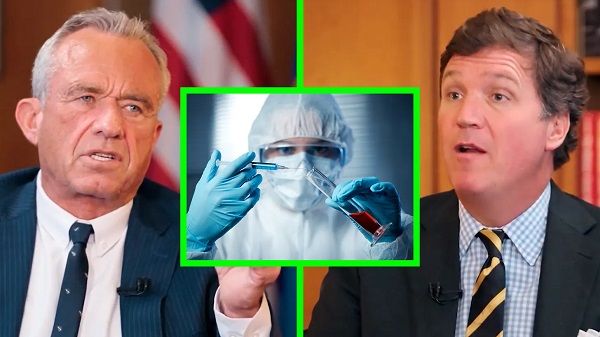
 Health2 days ago
Health2 days agoRFK Jr. Unloads Disturbing Vaccine Secrets on Tucker—And Surprises Everyone on Trump
-

 Alberta13 hours ago
Alberta13 hours agoPierre Poilievre – Per Capita, Hardisty, Alberta Is the Most Important Little Town In Canada
-
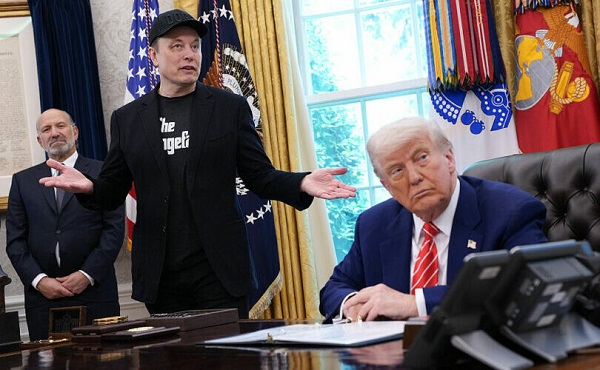
 Business1 day ago
Business1 day agoElon Musk slams Trump’s ‘Big Beautiful Bill,’ calls for new political party













